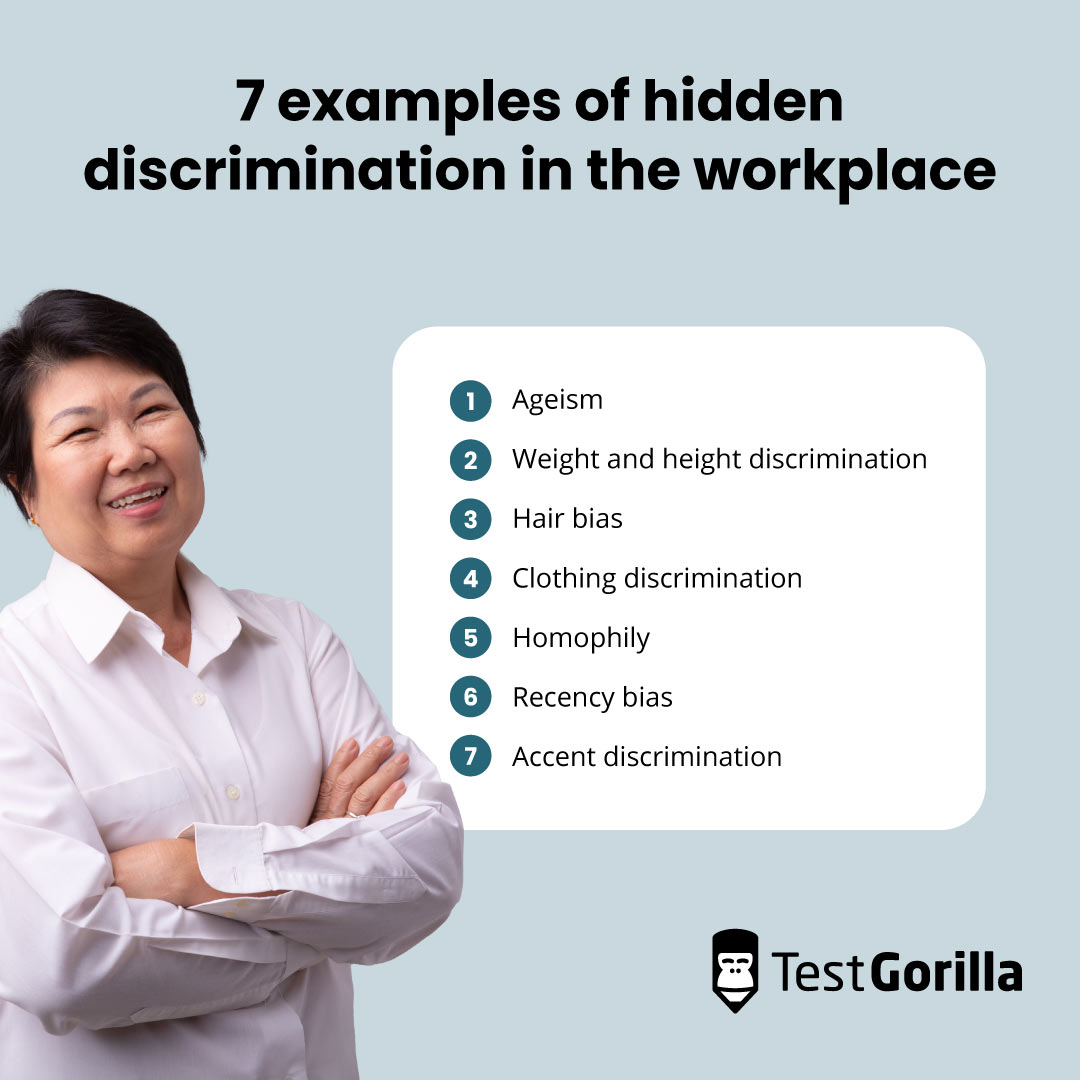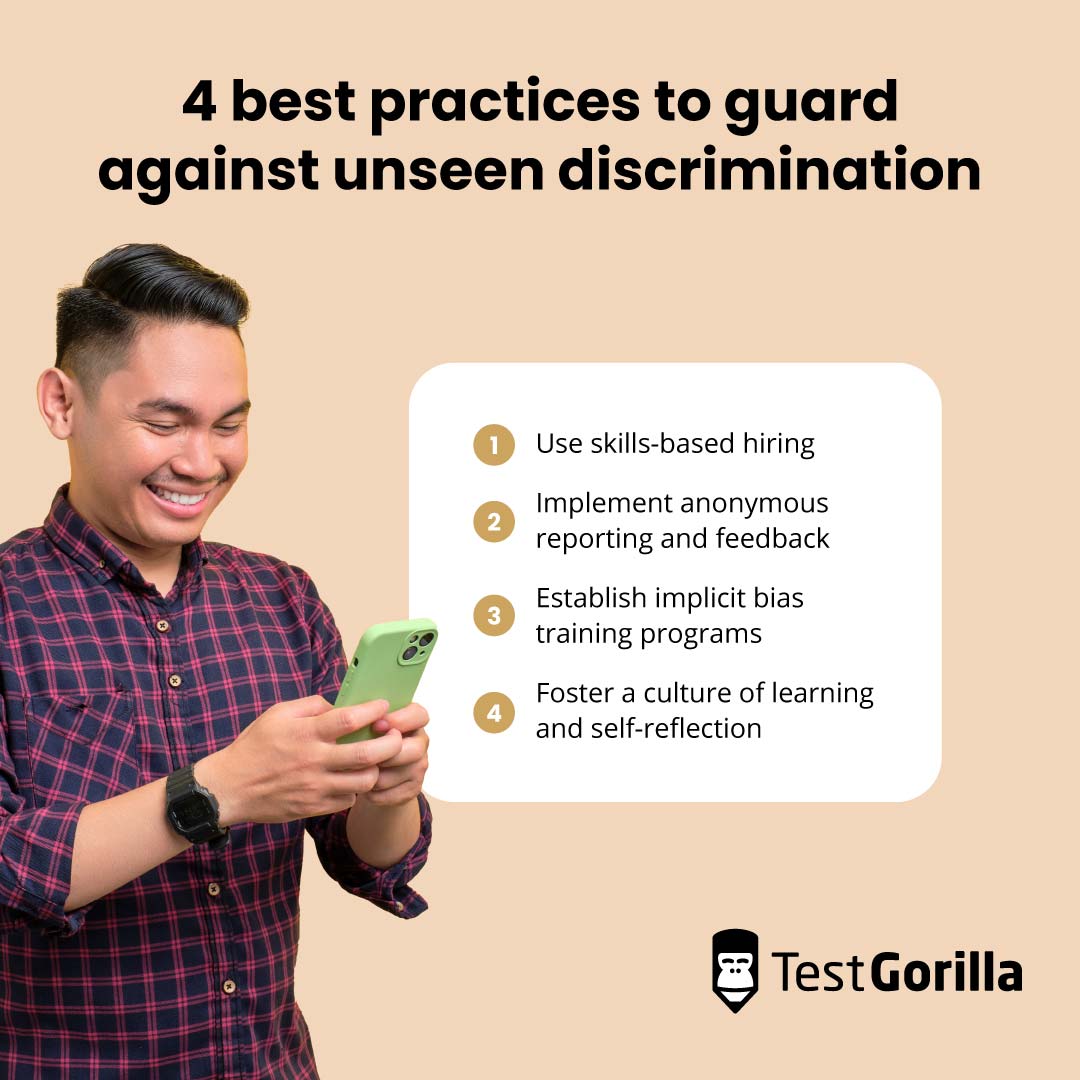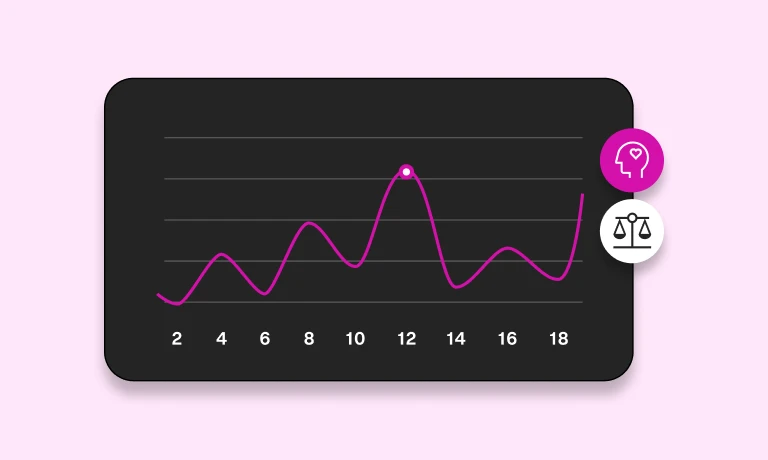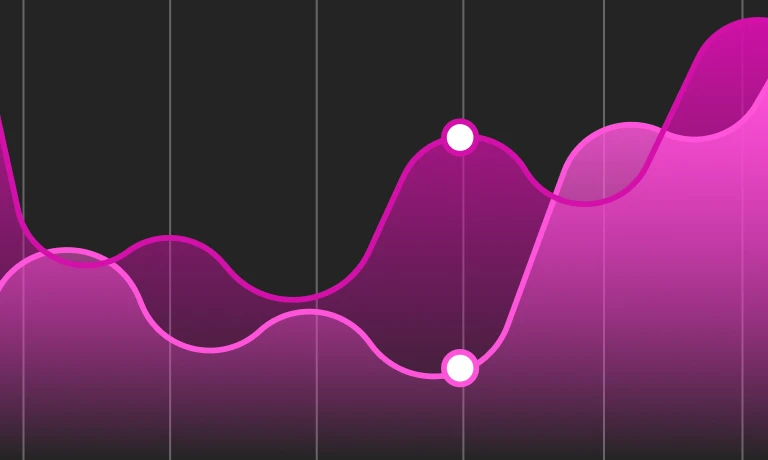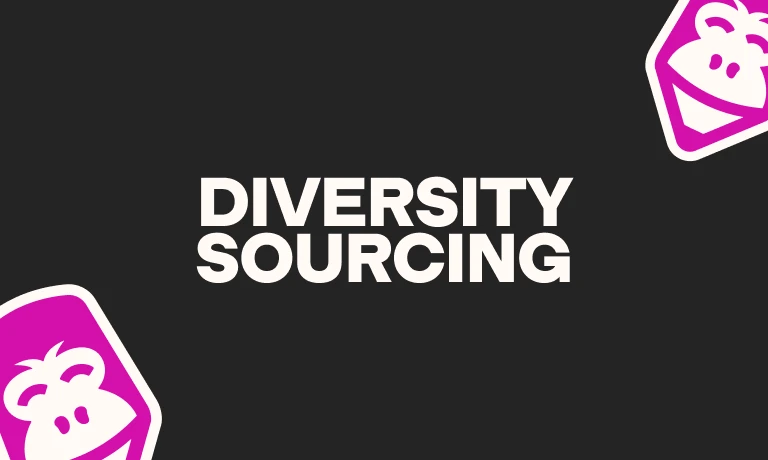“We know that he has problems in qualifying, he has fluctuations in form, he is South American, and he is just not as completely focused in his head as Max [Verstappen – Dutch] is or as Sebastian [Vettel – German].”
These were Helmut Marko’s remarks about F1 driver Sergio Perez (who is from Mexico, so he’s actually North American). Helmut’s comment caused a mini outcry, but this attitude isn’t uncommon and is just one example of how a lack of awareness can cause harm and offend certain groups.[1]
While racial and gender discrimination are generally well understood, what about the less obvious stereotypes and biases that can cause equal amounts of hurt in the workplace?
Seemingly innocuous comments might have damaging implications for certain team members, your organization’s approach to performance reviews could be inherently biased, and your hiring processes could marginalize some groups right from the outset.
In this article, we look at seven types of discrimination that often get overlooked. We also discuss how to guard against these stereotypes with greater awareness and sensitivity, as well as share updated HR processes and organization-wide procedures that you can implement.
7 examples of hidden discrimination in the workplace
There are a number of rarely discussed, or often ignored, stereotypes and biases. These seven examples are all common kinds of discrimination that can infiltrate practices, behaviors, and attitudes in your workplace, each with potentially damaging consequences for your employees.
1. Ageism
The US Equal Employment Opportunity Commission (EEOC) states that “an employment policy or practice that applies to everyone, regardless of age, can be illegal if it has a negative impact on applicants or employees age 40 or older,” and “offensive or derogatory remarks about a person's age” can be considered unlawful discrimination and harassment.[2]
Meanwhile, the World Health Organization (WHO) notes that “ageism intersects and exacerbates other forms of disadvantage including those related to sex, race, and disability.”[3]
Nevertheless, workplace ageism is commonplace, and the stereotypes that cause it can be so embedded in our culture that it’s sometimes even promoted. For example, you may have seen an agency describe itself as “young and dynamic.”
This may sound positive and harmless, but the implication is that older employees lack dynamism or are in some other way less capable, which could even discourage them from applying for a position.
Whether it’s older people being profiled as lacking digital skills or younger employees being assumed to be unreliable or lacking in competence, ageism limits people’s opportunities, can damage their self-esteem, and can undermine the work of your teams.
2. Weight and height discrimination
New York City recently joined other US cities and states by introducing a bill to ban weight and height bias. In particular, the retail, performing arts, and fashion industries were identified in a hearing on the bill as needing to “prepare themselves to have their hiring practices and their cultures more broadly scrutinized.”[4]
Speaking at the bill signing ceremony, city council member Shaun Abreu said, “Size discrimination is a social justice issue and a public health threat. People with different body types are denied access to job opportunities and equal wages… Worse yet, millions are taught to hate their bodies.”[4]
Unconscious bias is partly to blame for the negative experiences that individuals suffer, with heaviness being associated with personality traits like a lack of self-discipline, laziness, and carelessness.[5]
Similarly, tallness is often associated with positive leadership qualities – the flipside to this being that people of shorter-than-average height can be viewed as lacking charisma, confidence, or competence.[6]
As a result of weight and height biases, people can be unfairly disadvantaged when it comes to hiring or promotion choices. In fact, a recent study confirmed a correlation between height and wages, known as the height premium.[7]
3. Hair bias
A 2023 CROWN Workplace Research Study found that Black women’s hair is more likely to be perceived as unprofessional, two-thirds of Black women would change their hair for an interview, and more than a fifth of Black women aged 25-34 have been sent home from work because of their hair.[8]
Also, Black women with coily or textured hair are “twice as likely to experience microaggressions at work as Black women with straighter hair.”[8]
Despite the prevalence of hair bias in the workplace, the CROWN Act, which aims to “ensure protection against discrimination based on race-based hairstyles by extending statutory protection to hair texture and protective styles such as braids, locs, twists, and knots in the workplace and public schools,” has been passed by only 24 states across the US.[9]
Until hair discrimination is made illegal throughout the country, Black people can be denied professional opportunities because of their hair. In the meantime, awareness of the issue and best practices, including for hiring and inclusion policies, are key.
4. Clothing discrimination
In many modern workplaces, dress codes are viewed as being outdated. Nevertheless, they’re still very common, especially in corporate offices, retail, food services, and education. However, companies have to be careful not to discriminate in their guidelines when enforcing dress codes.[10]
For example, in New York City it’s prohibited for employer dress codes to impose different requirements for employees based on gender. Meanwhile, Washington DC’s unlawful treatment laws include protecting employees against the discrimination of the “manner or style of dress or personal grooming which is contrary to their assigned sex.”
But even where there isn’t formalized direction on what is and isn’t considered acceptable attire, it’s easy for long-held cultural norms to impact attitudes and behaviors in response to the clothes people wear. These can bring about negative associations with certain kinds of appearances, potentially marginalizing employees based on their cultural, religious, or gender identities.
5. Homophily
Homophily is the trait of associating yourself with others who have similar backgrounds and attitudes.
This is a very natural inclination – to feel confident and comfortable with people whose most fundamental characteristics reflect your own. However, it can be harmful in professional environments: It can damage your ability to build strong teams, impact people’s interpersonal relationships, and compromise your best efforts to implement fair and effective hiring practices.
Therefore, when it comes to making hiring decisions, be aware that homophilous tendencies can come about as the result of more or less any observable human characteristic.[11]
For example, your decision-making process could be influenced not only by a candidate’s political affiliations, demographic backgrounds, or even the makeup they wear, but also their risk preferences, pastimes, and body mass index.
6. Recency bias
When making an assessment based on events that happened over an extended time period, it’s common for people to place more importance on the most recent events – this is recency bias.
As a result, recency bias often presents itself in the workplace during performance reviews and the hiring process.
In the case of quarterly performance reviews, a manager is more likely to disregard challenges, difficulties, or successes that occurred at the start of a quarter, instead focusing on the last instance of completed work, internal communication, or client interaction. Ultimately, this could skew the manager’s evaluation of the employee.
Equally, when choosing who to internally promote, the full breadth of a reliable employee’s experience could be overlooked if the most relevant of those experiences happened a relatively long time ago.
Meanwhile, if you’re interviewing dozens of candidates for a position, you could favor the most recent interviewee, even if their profile isn’t as strong as that of other candidates you previously spoke with.
7. Accent discrimination
Recent research by Queen Mary University of London (QMUL) found that 25% of professionals reported “being mocked, criticized, or singled out” because of their accents. While this in and of itself doesn’t qualify as unconscious bias, it highlights the prevalence of a kind of prejudice that could permeate HR decision-making processes.
As QMUL’s Professor Devyani Sharma, who led the study, said, “Accent-based discrimination actively disadvantages certain groups at key junctures for social mobility, such as job interviews.”
While Professor Sharma’s study was focused on regional accents within the UK, research by the Royal Holloway, University of London found that “people believe information less when it’s spoken in a foreign accent.”
However, the same study also found that “people can reduce the bias they have against non-native speakers by having more exposure to foreign accents. This suggests that diversity can reduce discrimination against non-native speakers.”
With this in mind, below we look at ways to protect your hiring and management practices from unconscious bias so you can build a stronger, more diverse organization.
4 best practices to guard against unseen discrimination
To protect your organization from the risks of discrimination, you need to increase awareness of the issues and, where possible, introduce greater objectivity in your decision-making.
Here we look at four effective strategies to help you take action against overlooked bias in your workplace.
1. Use skills-based hiring
One way to successfully mitigate the risk of discrimination within your organization is to prioritize diversity. Unfortunately, unconscious bias can undermine your DE&I (Diversity, Equity, and Inclusion) initiatives.
To address this, implement skills-based hiring, which evaluates candidates based on relevant skills, their personality, and how they can complement your company culture, rather than relying on bias-ridden methods like resumes and referrals. This approach helps recruiters avoid the pitfalls of unseen discrimination in their hiring processes.
Skills-based hiring is so effective in mitigating bias that, according to our State of Skills-Based Hiring 2024 report, 90% of employers using this method “report that it has a positive impact on workplace diversity.”
Other key benefits of skills-based hiring include these findings from our report:
70% of employers agree that skills-based hiring is more effective than resumes
74% of employers reduced cost-to-hire when using skills-based hiring
89% of organizations improved employee retention when hiring for skills
2. Implement anonymous reporting and feedback
When people at your organization experience discrimination, they need a confidential way to report it and see that their concerns have been taken seriously.
By implementing a system of anonymous reporting and feedback, your HR team can gather valuable data on workplace attitudes and behaviors, then share findings and plan follow-up actions, to cultivate a safe and positive work environment.
Even when there hasn’t been a case of overt discrimination, it’s important for individuals from underrepresented groups to feel there’s an established channel for them to turn to should such an issue arise.
Furthermore, knowing there’s a concrete process in place for regular feedback and reporting helps raise awareness across your organization about the importance of managing unconscious bias and making your workplace safe and enjoyable for everyone.
3. Establish implicit bias training programs
Effective implicit bias training brings together key members of your team, like HR managers, your DE&I department, and senior leadership, to engage in interactive sessions that use real-world examples of unconscious bias to spark conversation, debate, learning, and even role-play.
Through this experience, participants can develop their understanding of the ways their own thinking can be influenced by unconscious bias, how this affects their decision-making, and the domino effects for other employees, team morale, and work performance.
As with all training, an implicit bias training program works best with a clear understanding of your employees’ needs, their personal and professional goals, and their skills gaps. Use talent assessments, like you do with skills-based hiring, to determine which areas of training your people need most.
As Industrial-Organizational Psychologist Srayasi Ghosh says in our latest annual report, “The
integration of skills-based hiring into our employee-development strategy was remarkable. With personalized insights gained from the assessments, we were able to create targeted training programs that not only boosted skills, but also nurtured individual growth and job satisfaction.”
4. Foster a culture of learning and self-reflection
If you want to encourage progressive attitudes about personal development and the issues of unconscious bias in the workplace, you may need to promote an organization-wide cultural shift toward learning and self-reflection.
Openly sharing personal experiences can be important for this, so in addition to welcoming anonymous feedback, consider facilitating the sharing of educational resources, dedicating communication channels to DE&I-relevant discussions, and encouraging leadership to set the standard.
As part of that last effort, your approach to assessing top candidates for management and leadership positions plays a crucial role. Ensure you’re hiring the right people by having them take the Big 5 (OCEAN) test, which provides you with deep insights into a candidate’s personality traits.
For example, you can learn about their openness to new experiences, their conscientiousness, and how compassionate they are. This helps you ensure you’re hiring people for your leadership positions who are open to being vulnerable and sharing their own experiences, as well as listening to and empathizing with other employees’ experiences.
The best insights on HR and recruitment, delivered to your inbox.
Biweekly updates. No spam. Unsubscribe any time.
Understanding unconscious bias and raising awareness
Unconscious bias encompasses discrimination based on traits like age, appearance, the way people dress, and the way they speak. Just as homophily can push people to associate themselves with others because of practically any observable trait, so can unconscious bias present itself in response to almost any noticeable human characteristic.
However, it’s also true that unconscious bias most commonly disadvantages already marginalized groups, exacerbating the challenges of people due to their age, background, or racial or gender identity. This can not only harm their self-confidence but also limit their professional opportunities and undermine their employee experience at your organization.
Consequently, stereotypes and biases compromise your hiring decisions, team morale, and team performance.
With strategies to increase diversity and grow awareness, though – like a skills-based approach to hiring and a cultural shift toward openness and learning – you can create a better, stronger, and more equitable workplace.
Want to avoid bias and hire on talent and suitability alone? Skills-based hiring helps you recruit the best people for every position. Read the 2024 State of Skills-Based Hiring report to learn more. |
Sources
1. "Helmut Marko apologises for offensive comments about Sergio Perez." (2023). ESPN. Retrieved October 21, 2023. https://www.espn.co.uk/f1/story/_/id/38358814/helmut-marko-apologises-offensive-comments-sergio-perez
2. "Age Discrimination." (2023). US Equal Employment Opportunity Commission. Retrieved October 21, 2023. https://www.eeoc.gov/age-discrimination
3. "Ageing: Ageism." (2021). World Health Organization. Retrieved October 21, 2023. https://www.who.int/news-room/questions-and-answers/item/ageing-ageism
4. "Mayor Adams Signs Legislation To Prohibit Height Or Weight Discrimination In Employment, Housing, And Public Accommodations." (2023). The Official Website of the City of New York. Retrieved October 21, 2023. https://www.nyc.gov/office-of-the-mayor/news/364-23/mayor-adams-signs-legislation-prohibit-height-weight-discrimination-employment-housing-#/0
5. “Handbook of Prejudice, Stereotyping, and Discrimination” (2009). Hove, England: Psychology Press.
6. "Height discrimination: How 'heightism' affects careers." (2022). BBC. Retrieved October 21, 2023. https://www.bbc.com/worklife/article/20220825-height-discrimination-how-heightism-affects-careers
7. "The height premium: A systematic review and meta-analysis." (2023). ScienceDirect. Retrieved October 21, 2023. https://www.sciencedirect.com/science/article/pii/S1570677X23000540
8. “Hair Discrimination Research: Dove CROWN Studies.” (2023.) CROWN Act Research Studies. Retrieved October 21, 2023. https://www.thecrownact.com/research-studies
9. The CROWN Act. Retrieved October 21, 2023. https://www.thecrownact.com/
10. "Strict Dress Codes May Lead to Discrimination Claims." (2018). SHRM. Retrieved October 21, 2023. https://www.shrm.org/ResourcesAndTools/legal-and-compliance/employment-law/Pages/Strict-Dress-Codes-May-Lead-to-Discrimination-Claims.aspx
11. "The Dynamics of Networks and Homophily" (2022). NBER Working Paper Series. Retrieved October 21, 2023. https://www.nber.org/system/files/working_papers/w30815/w30815.pdf
Related posts
You've scrolled this far
Why not try TestGorilla for free, and see what happens when you put skills first.


